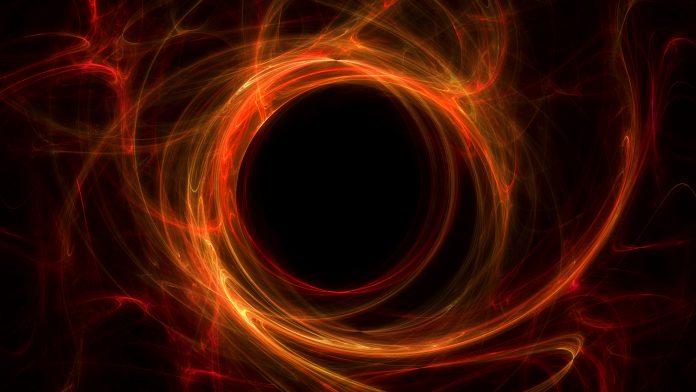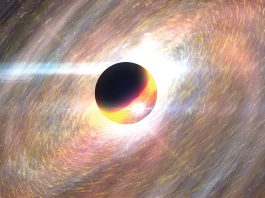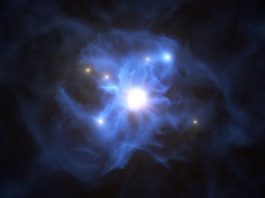Researchers at Nagoya University have discovered plasma jets interacting with magnetic fields in a gigantic galaxy cluster 600 million light-years away, utilising radio telescopes and supercomputer simulations.
The radio telescope images will allow for novel ways of examining magnetic fields in galaxy clusters and illuminate how these clusters evolve.
The researchers have published their findings in Nature journal.
Galaxy clusters can encompass thousands of galaxies forced together by gravity. One such cluster is Abell 3376, which is developing due to a powerful collision of two sub-clusters of galaxies. Currently, very little is understood about the magnetic fields that are found within this and similar galaxy clusters.
“It is generally difficult to directly examine the structure of intracluster magnetic fields,” explained one of the researchers, Tsutomu Takeuchi, a Nagoya University astrophysicist. “Our results clearly demonstrate how long-wavelength radio observations can help explore this interaction.”
An international team of researchers have been employing the MeerKAT radio telescope, located in the Northern Cape of South Africa, in order to understand more about Abell 3376’s gigantic magnetic fields.
With the help of one of the telescope’s high-resolution images, the scientists discovered some unforeseen evidence: plasma jets released by a supermassive black hole in the cluster bend to form a distinctive T-shape as they reach outwards for expanses as far as 326,156 light-years away. The black hole is in galaxy MRC 0600-399, which is close to the centre of Abell 3376.
The researchers merged the data from the MeerKAT radio telescope data with X-ray data from the European Space Agency’s space telescope XXM-Newton to discover that the plasma jet bend takes place at the periphery of the subcluster in which MRC 0600-399 exists.
“This told us that the plasma jets from MRC 0600-399 were interacting with something in the heated gas, called the intracluster medium, that exists between the galaxies within Abell 3376,” said Takeuchi.
In order to decipher precisely what was occurring, the group performed 3D ‘magnetohydrodynamic’ simulations applying the world’s most powerful supercomputer in the field of astronomical calculations, ATERUI II, situated at the National Astronomical Observatory of Japan.
The simulations revealed that the jet streams released by MRC 0600-399’s black hole ultimately reach and intermingle with magnetic fields at the periphery of the galaxy subcluster. The jet stream compresses the magnetic field lines and moves along them, creating the characteristic T-shape.
“This is the first discovery of an interaction between cluster galaxy plasma jets and intracluster magnetic fields,” commented Takeuchi.
An international group has now started the production of what is projected to be the world’s largest radio telescope, called the Square Kilometre Array (SKA).
“New facilities like the SKA are expected to reveal the roles and origins of cosmic magnetism and even to help us understand how the universe evolved,” added Takeuchi. “Our study is a good example of the power of radio observation, one of the last frontiers in astronomy.”









